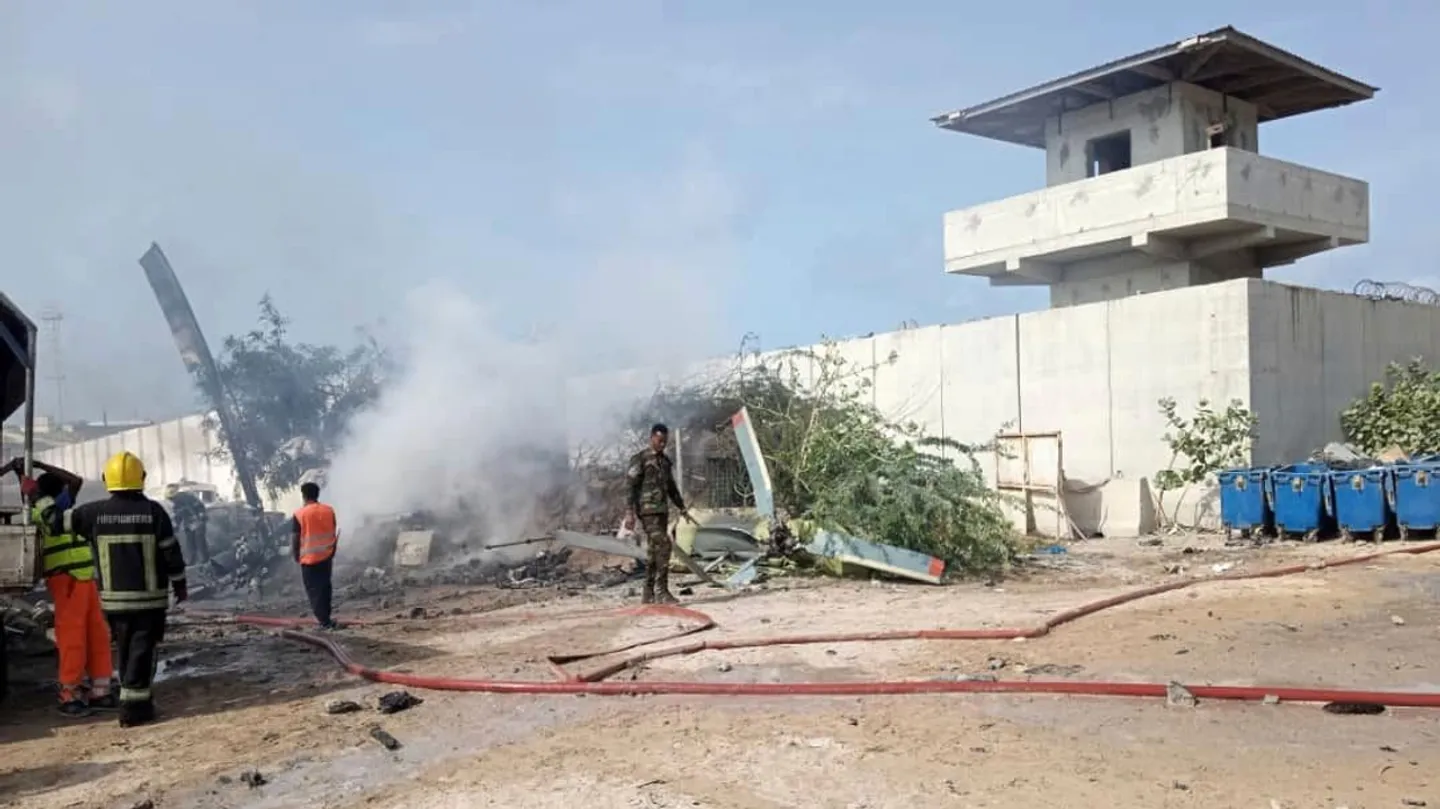A Ugandan military helicopter operating under the African Union Support and Stabilization Mission in Somalia (AUSSOM)
crashed in flames on Wednesday morning near Aden Adde International Airport, killing five peacekeepers and injuring others in what is being described as one of the most tragic incidents involving AU forces in recent years.
The aircraft involved was a Mil Mi-24—a heavily armed Soviet-designed helicopter often used for combat escort, troop deployment, and medical evacuations. According to eyewitnesses at the scene, the helicopter descended in flames before hitting the ground and exploding, likely due to munition detonation onboard.
The helicopter had been flying back from an assignment in the volatile Lower Shabelle region, an area often targeted by the Al-Shabaab insurgency, when it encountered unspecified difficulties moments before landing.
Out of the eight soldiers onboard, three—identified as the pilot, co-pilot, and flight engineer—survived the impact but suffered severe burn injuries and are now receiving urgent treatment at a military field hospital. The other five service members perished at the scene, marking a painful loss for the Ugandan People’s Defence Forces (UPDF).
According to Brigadier General Felix Kulayigye, spokesperson for Uganda’s military, a full-scale joint investigation is underway in collaboration with the Somali Civil Aviation Authority and AUSSOM’s aviation division to determine what caused the crash.
Also Read; Iran Demands Safety Before U.S. Talks Resume
“We are not ruling out any possibilities—mechanical issues, pilot error, or even hostile fire,” he said.
Meanwhile, airport operations were temporarily suspended as emergency crews extinguished the fire and cordoned off the crash site. Three Somali civilian workers nearby were also reportedly injured by flying debris and are being treated.
This crash comes just months after the African Union officially transitioned from AMISOM to AUSSOM in 2025, continuing a nearly two-decade-old military engagement in Somalia, aimed at stabilizing the country and supporting the federal government’s fight against terrorism.
Uganda remains the largest troop contributor, with thousands deployed across the country as part of regional efforts supported by the Intergovernmental Authority on Development (IGAD) and international partners such as the United Nations, European Union, and United States Africa Command (AFRICOM).
The U.S. Embassy in Somalia issued a condolence message, calling the soldiers “brave peacekeepers who paid the ultimate price.” The African Union Commission also pledged full support in recovery operations and post-crash assessments.
This is not the first time Uganda has suffered aerial losses in Somalia. In 2012 and 2014, similar Mi-24 crashes occurred during military operations. Analysts have long raised concerns over the aging aircraft fleet and harsh operating environments that increase the likelihood of such incidents.
Military observers argue that better maintenance, modern navigation systems, and increased funding for aviation logistics could help avert similar tragedies in the future.
This crash not only represents a tactical loss—as the Mi-24 is vital for air support—but also a symbolic blow to the morale of forces risking their lives for peace. As Somalia continues to battle insecurity, the loss of any air asset significantly affects operational flexibility, particularly in rural and high-risk zones where ground access is limited.







